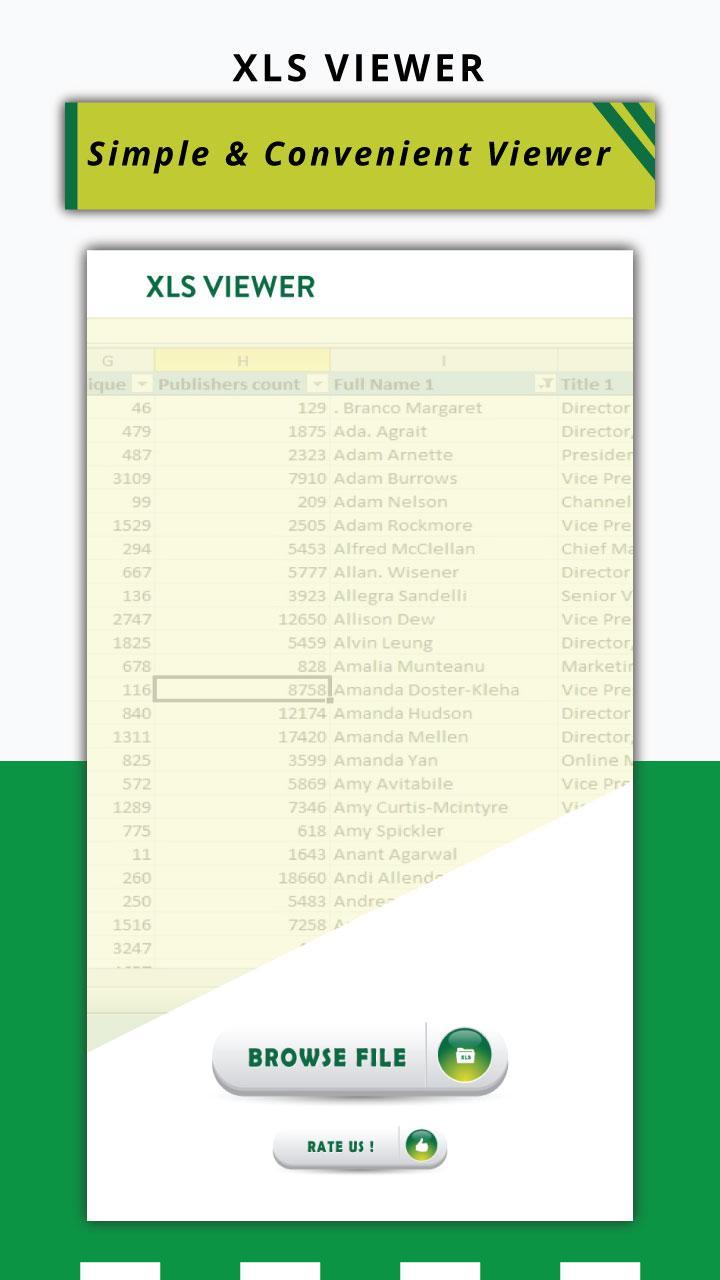There are two main functions in xlsx package for reading both xls and xlsx Excel files: read.xlsx and read.xlsx2 faster on big files compared to read.xlsx function. The simplified formats are: read.xlsx(file, sheetIndex, header=TRUE) read.xlsx2(file, sheetIndex, header=TRUE). Xlsx Reader free download - Foxit Reader, ZIP Reader, PDF Reader for Windows 7, and many more programs.
R/read_excel.RXlsx Reader Python
Read xls and xlsx files

read_excel() calls excel_format() to determine if path is xls or xlsx,based on the file extension and the file itself, in that order. Useread_xls() and read_xlsx() directly if you know better and want toprevent such guessing.
Arguments
| path | Path to the xls/xlsx file. |
|---|---|
| sheet | Sheet to read. Either a string (the name of a sheet), or aninteger (the position of the sheet). Ignored if the sheet is specified via |
| range | A cell range to read from, as described in cell-specification.Includes typical Excel ranges like 'B3:D87', possibly including the sheetname like 'Budget!B2:G14', and more. Interpreted strictly, even if therange forces the inclusion of leading or trailing empty rows or columns.Takes precedence over |
| col_names |
|
| col_types | Either |
| na | Character vector of strings to interpret as missing values. Bydefault, readxl treats blank cells as missing data. |
| trim_ws | Should leading and trailing whitespace be trimmed? |
| skip | Minimum number of rows to skip before reading anything, be itcolumn names or data. Leading empty rows are automatically skipped, so thisis a lower bound. Ignored if |
| n_max | Maximum number of data rows to read. Trailing empty rows areautomatically skipped, so this is an upper bound on the number of rows inthe returned tibble. Ignored if |
| guess_max | Maximum number of data rows to use for guessing columntypes. |
| progress | Display a progress spinner? By default, the spinner appearsonly in an interactive session, outside the context of knitting a document,and when the call is likely to run for several seconds or more. See |
| .name_repair | Handling of column names. By default, readxl ensurescolumn names are not empty and are unique. If the tibble package version isrecent enough, there is full support for |
Value
A tibble
See also

cell-specification for more details on targetting cells with therange argument
Xlsx Reader Apk
Examples
The function pulls the value of each non empty cell in the worksheet into avector of type list by preserving the data type. Ifas.data.frame=TRUE, this vector of lists is then formatted into arectangular shape. Special care is needed for worksheets with ragged data.
An attempt is made to guess the class type of the variable corresponding toeach column in the worksheet from the type of the first non empty cell inthat column. If you need to impose a specific class type on a variable, usethe colClasses argument. It is recommended to specify the columnclasses and not rely on R to guess them, unless in very simple cases.
Excel internally stores dates and datetimes as numeric values, and does notkeep track of time zones and DST. When a datetime column is brought into ,it is converted to POSIXct class with a GMT timezone.Occasional rounding errors may appear and the and Excel stringrepresentation my differ by one second. For read.xlsx2 bring in adatetime column as a numeric one and then convert to class POSIXct orDate. Also rounding the POSIXct column in R usually does thetrick too.
The read.xlsx2 function does more work in Java so it achieves betterperformance (an order of magnitude faster on sheets with 100,000 cells ormore). The result of read.xlsx2 will in general be different fromread.xlsx, because internally read.xlsx2 usesreadColumns which is tailored for tabular data.
Reading of password protected workbooks is supported for Excel 2007 OOXMLformat only.